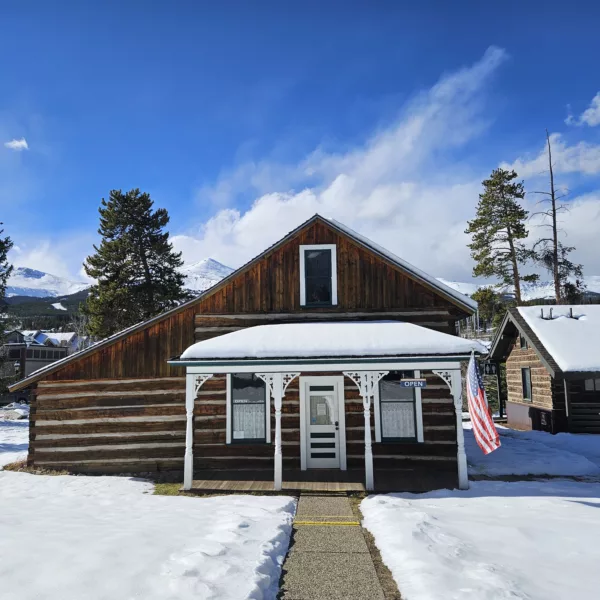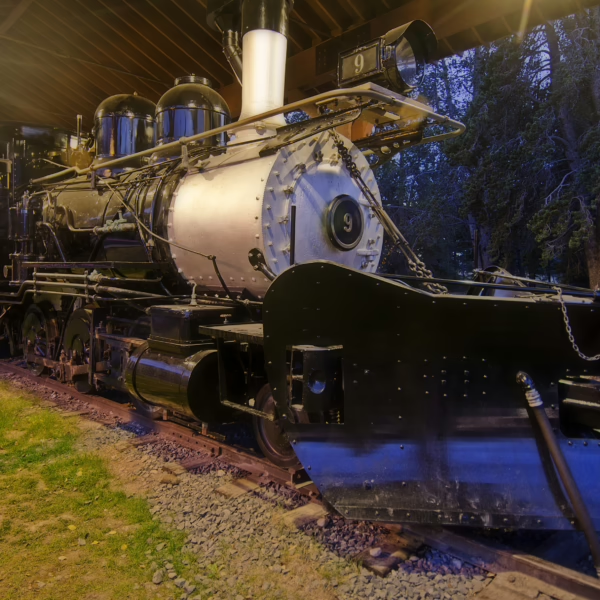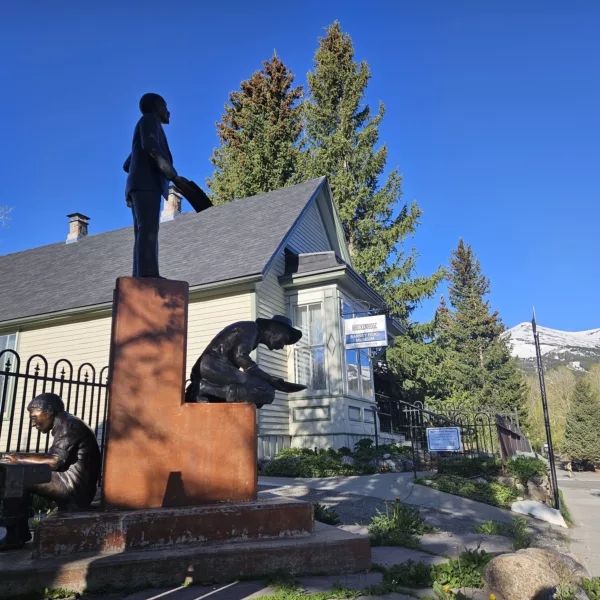Población del condado de Summit
April 08, 2022 | Category: Historia de Breckenridge
La población del condado de Summit y sus pueblos subió y bajó con la fortuna de la minería.
Desde una estimación inicial de "cientos" en el condado en 1860 durante la primera fiebre del oro, el número se redujo a 258 en 1870. Con el segundo auge, en 1880, el número de residentes aumentó a 5.459, para descender a 1.906 en 1890 debido a la inminente crisis nacional de la plata. Las operaciones de dragado y la reactivación de la minería aluvial a finales de siglo hicieron que el censo de 1900 alcanzara los 2.744 habitantes.
Los datos del censo de Breckenridge muestran el mismo patrón de crecimiento y descenso: un total de 51 en 1870; un aumento en 1880 a 1657; un descenso a 714 en 1890; y para 1900, un aumento a 976.
Algunos en Breckenridge afirmaban tener ascendencia del norte de Europa, pero la mayoría eran nativos. De los que residían en Breckenridge en 1870, 37 habían nacido en Estados Unidos; 14 en suelo extranjero.
En el condado de Summit en 1870, la población nativa llegó principalmente de Ohio, Nueva York y Pensilvania. Estos mismos tres estados más Illinois encabezaban la lista en 1880. En 1885, los nacidos en Colorado ya superaban en número a los nacidos en Pensilvania y otros lugares.
Los nacidos en el extranjero en Colorado en 1860 procedían, en orden descendente, de Canadá, Irlanda, los estados alemanes, Inglaterra y Escocia. En el censo de 1870 no habían cambiado mucho las cosas. Los irlandeses, que escapaban de la hambruna de la patata, ocupaban ahora el primer lugar; después, los alemanes, los ingleses y, en cuarto lugar, los canadienses. En 1880, los ingleses ocupaban el primer lugar, seguidos de irlandeses, alemanes y canadienses en orden descendente. Para entonces, el Imperio Alemán había unido los estados, principados y reinos alemanes. Si Gales, Cornualles e Inglaterra se consideran como una sola junto con Canadá e Irlanda, entonces estas zonas enviaron el mayor número de inmigrantes a Colorado en 1860, 1870 y 1880.
Breckenridge y el condado de Summit siguieron las tendencias nacionales. Los residentes del condado nacidos en el extranjero llegaron principalmente del norte de Europa. En el censo de 1870 figuraban 11 procedentes de la América británica (Canadá), 28 de Inglaterra y Gales, 14 de Irlanda, tres de Escocia, 27 de Alemania, tres de Noruega y Suecia y dos de Dinamarca.
La fiebre del oro golpeó con fuerza a Londres, lo que provocó una gran migración a Colorado. Un escritor llamó a Colorado "Inglaterra más allá del Missouri".
En Cornualles, las malas condiciones de trabajo, el hambre, los bajos salarios, la mala gestión de las minas y el creciente desempleo empujaron a los mineros de Cornualles a Estados Unidos. Asentados primero en los estados del este, los cornualles acabaron llevando sus conocimientos y experiencia a Colorado y al condado de Summit. La presencia de ciertas organizaciones sociales e instituciones religiosas nos habla de los Cornish que vivieron en el condado de Summit: los masones, los caballeros de Pythias, la Orden Independiente de Odd Fellows y, por supuesto, la Iglesia Metodista.
Un número considerable de inmigrantes reclamaba Alemania como "hogar". Muchos llegaron al condado de Summit sin planes de trabajar en las minas. Consideraban que encontrar un futuro económico estable pasaba por aplicar un oficio en lugares distintos de las minas. Se convirtieron en carpinteros, taberneros, comerciantes o propietarios de pensiones. Tantos alemanes vivían en Colorado que, durante 12 años (1877-1899), el estado imprimió sus leyes en alemán, además de en inglés y español. No se abstenían de jugar a las cartas, bailar o beber, ni siquiera los domingos, restricciones estrictamente observadas por los metodistas de Cornualles.
Muchos residentes percibían a los chinos como una amenaza para los mineros y comerciantes, así como para el entorno económico general de la zona. Por eso no daban la bienvenida a los "Celestiales". El director del periódico escribió que "expulsarían a la mano de obra blanca, vaciarían las escuelas, harían que los comerciantes llevaran poca variedad y productos baratos, y harían que los esfuerzos de los últimos 20 años carecieran de sentido. Sería mejor dejar las minas ociosas que traer a los chinos a trabajarlas". Editorializó: "Que se queden los de aquí, pero que no entre nadie más".
Los trabajadores chinos se dedicaban a la minería aluvial en French Gulch; en Barney Ford Hill, en la cabecera de Mayo e Illinois gulches, y al sur de Breckenridge, a lo largo del río Blue. En 1888, cuando llegaron chinos para trabajar en algunos placeres cerca de Lincoln, el editor del periódico comentó que "no se necesitaban chinos y no se toleraría a ninguno".
A pesar de la animadversión hacia los chinos, el editor del Journal escribió sobre el Año Nuevo chino en términos muy amistosos, mencionando que Choy, que trabajaba en la lavandería, regalaba caramelos y frutos secos a los niños del pueblo.
No se contó a ningún chino en el censo de Colorado de 1860; el número aumentó a 7 en 1870. Ninguno vivía en el condado de Summit. Para 1880, 601 vivían en el estado. Los 19 del condado de Summit trabajaban en lavanderías. Cinco años más tarde, el número había aumentado a 21 en el condado; 17 trabajaban en minas aluviales; dos trabajaban como lavaplatos y dos trabajaban en lavanderías.
Por regla general, las chinas no traían a sus familias. Como las mujeres chinas no estaban dispuestas a abandonar su tierra natal, los investigadores calculan que hasta el 90% de las mujeres chinas en Estados Unidos eran prostitutas. Muchas habían sido secuestradas o vendidas como sirvientas, a veces incluso cuando aún eran bebés. Una vez en una ciudad minera o en un campamento, la mujer china tenía pocas oportunidades de relacionarse con otras mujeres de la comunidad. Sujeta a los deseos de su marido, se pasaba el día haciendo la colada, cosiendo o planchando. Como los hombres chinos no se casaban con mujeres no chinas, muchas prostitutas se convertían en esposas de hombres chinos mayores. En el censo de Breckenridge de 1880, aparece una mujer china: Lee Cum, de 25 años, esposa de Lee Chun, de 52 años. Ambos trabajaban en una lavandería. ¿Era una prostituta que más tarde se convirtió en la esposa de un hombre mucho mayor?
Los de origen italiano no eran más bienvenidos que los chinos. Los titulares gritaban "Traficando con dagoes - la importación de 100 organilleros creó un considerable revuelo" cuando la Pence-Miller Placer Company, en el río Blue, contrató a italianos para cavar una zanja. Incluso después del cambio de siglo, alguna correspondencia formal de funcionarios del condado se refería a los italianos como "dagoes".
En el condado de Summit vivían muy pocos afroamericanos. El editor del periódico señaló que tantos "Darkies" trabajaban en las minas aluviales en 1860 en Utah Gulch, a una milla al este de Breckenridge, en French Gulch, que el barranco había sido rebautizado en su honor. En 1885, el censo contó cinco afroamericanos libres de los 258 residentes del condado.
Como era de esperar en las primeras ciudades mineras con pocos servicios, predominaban los hombres jóvenes y solteros. Aquellos menos atados por la familia y las finanzas podían dirigirse más fácilmente hacia el oeste. Sólo más tarde, a medida que los pueblos crecían, las mujeres y los niños constituyeron una mayor parte de la población. En el condado de Summit, entre 1860 y 1885, los solteros solteros constituían la mayor parte de la población. Los hombres casados venían con bastante frecuencia sin su cónyuge o familia. En general, los comerciantes y profesionales traían a sus familias. Esperaban quedarse y construir la ciudad y la economía en lugar de encontrar fortuna y volver a "casa".
escrito por Sandra F. Mather, PhD




